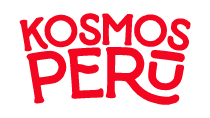Peru is a country filled with marvellous places, and one of the most known places all over the world is Machu Picchu. This touristic spot not only has great historic significance, but it’s the birthplace of many amazing recipes that are part of Peruvian gastronomy.
If you want to find out more about why Machu Picchu is so important, which ingredients come from that area and which amazing recipes you can prepare that come from there, keep reading.
What makes Machu Picchu important
First off, it’s important to get to know a little bit about Machu Picchu to understand it’s relevance not only in Peruvian history but also in Peruvian gastronomy. Machu Picchu is an Inca citadel from pre columbian era built by emperors to live among the mountains.
However, the place was emptied after the Spanish conquest and remained hidden. Located in the middle of the mountains of the Eastern Cordillera of Perú, in the region of Cusco, Machu Picchu was once a location of great importance for its ancient cultures, but people didn’t know of its existence until found many, many years later.
As being the top of the mountain region of the country, Machu Picchu brings to local gastronomy some of the most crucial ingredients, many of them only found in this area. As you can see, the importance of this place is not only historical but also for their food.
Check out: WE DRINK PEACH QUINOA DRINK X 16 OZ.
Food you can find in Machu Picchu
It was discovered by archaeologists that the civilisation that occupied Machu Picchu had developed an elaborate farming system with huge parcels along the city. This farming system was built to take advantage of the constant and strong rains that happen in this region, and they even designed a drainage system for the extra water to be used correctly.
One of the ingredients grown in Machu Picchu and the whole region of Cusco is corn (also known as choclo) in its many types: yellow, white, purple, red, black, giant, etc. Corn is a crucial part of Peruvian food, being the base of many dishes and recipes, whether sweet or salty.
Another ingredient grown heavily in Machu Picchu is the potato, in several sizes and types. Potatoes are also a food you can find in many, many dishes all over Peru.
Typical recipes from Machu Picchu
A very important factor that shapes the way people eat in the region of Machu Picchu-Cusco is the weather and the height. These make people eat in a certain way and have at hand some ingredients that may be not so common in regions like coastal Peru. With that in mind, here are some traditional recipes you can enjoy there.
Timpo soup
Soups and broths are very common in the region of Cusco, they’re perfect for the cold mountain weather. Timpo soup is made with lambs head, bacon, cabbage, moraya potato, rice, yucas and even peaches to give it a sweet touch.
Saralawa
Another great soup that you can enjoy if you visit Machu Picchu is Saralawa, a creamy soup made with corn, lima beans, huacatay sauce and a mixture of typical herbs such as dry chili, cilantro and parsley. Saralawa soup is perfect to fill your tank and resist cold weather.
Olluquito con Charqui
Olluquito is a tuber, an exotic mix of a potato and a jicama grown in the Andean zone of Peru. Olluquito is the main ingredient for this amazing dish that also includes charqui, which is dry llama meat (in a special technique practiced by the Incas) and it’s served with rice. Click here to learn the full recipe for Olluquito con Charqui.
Humitas
Another amazing recipe prepared commonly in Machu Picchu and the Cusco region, humitas are the perfect combination of hot and filling. This food is considered a dessert, kind of like a tamale made with corn and sugar.
Some of the most famous meals from Peru come from Machu Picchu-Cusco region. Now you know almost all of the ingredients are probably already in your pantry or very easy to get, so if you’re curious about how this incredible recipes taste and you feel like trying the best of Peruvian food, check out our recipes and get to the kitchen!






